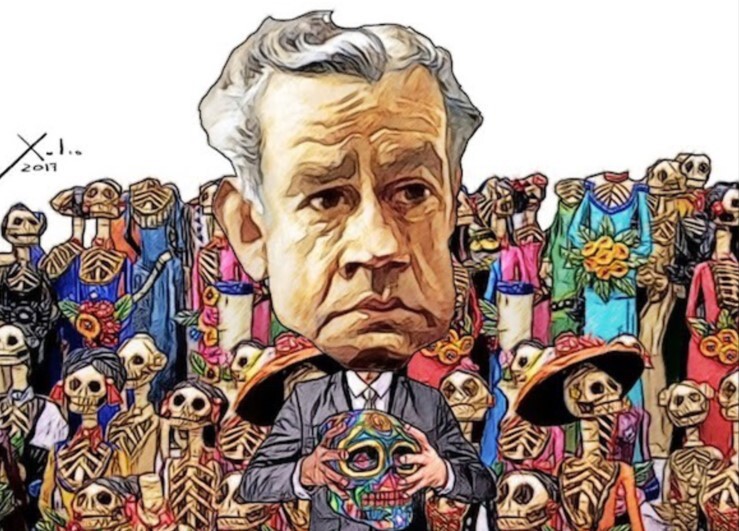
Poster of the hundredth anniversary of Rulfo´s death
*
Español
March 24, 2024
by Philip Gambone
A few months ago, I wrote about Juan Rulfo's novel Pedro Páramo, one of the most acclaimed novels in Mexican literature. Published in 1955, Pedro Páramo presaged the literary movement of the 1960s and 1970s known as El Boom, which ushered in the craze for magic realism. Argentinian writer Jorge Luis Borges, included Rulfo's novel among his personal list of one hundred great works of literature, deeming it one of the finest texts written in any language.
Rulfo (1917-1986) wrote only one other book, his collection of stories, El Llano en llamas (The Plain in Flames), which came out two years before the novel. Writing about these stories, translator Ilan Stavans says, "Their depth seems almost inexhaustible: with a few strokes, Rulfo creates a complex human landscape defined by desolation."
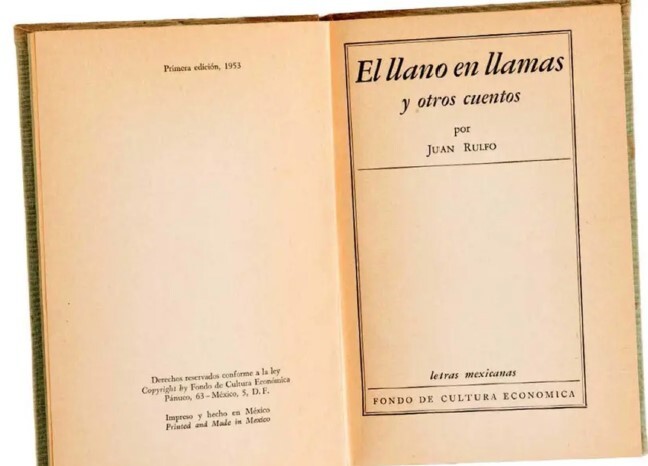
First edition
*
Desolation, yes, but the stories nevertheless may be an easier introduction to Rulfo's work than the novel, which is complex and surreal with scenes that move in and out of flashbacks and flashforwards. The stories in El Llano en llamas are more straightforward, but no less powerful. As another translator, George D. Schade, writes, Rulfo "achieves some of his finest moments in the short stories, where elaboration of a single event or the introspection of a single character allows him to illuminate the meaning, often the utter despair, of a man's life."
Rulfo was born in state of Jalisco in 1918. Both his parents died when he was young. At first, his grandmother raised him and later he was placed in an orphanage—somber experiences that would leave an austere mark on his fiction.
Unlike his characters, who are people of the campo, Rulfo spent his adult life in urban environments, first in Guadalajara and later in the capital, where he hoped to study law. Inspired by a course he took in literature, he started writing fiction in the mid-1930s. By the 1940s, he had published his first stories in little magazines, some of which he had to pay to get them into print. In 1953, under the title El Llano en llamas y otros cuentos, his story collection first came out. He continued to add and subtract stories until 1970, when the definitive edition was published.
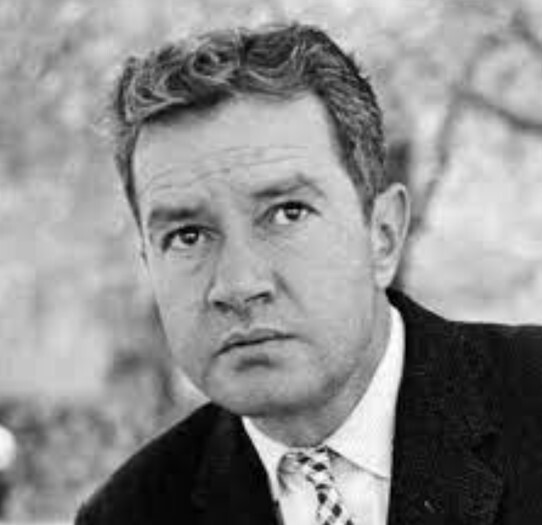
Juan Nepomuceno Carlos Pérez Rulfo Vizcaíno
*
The landscapes in El Llano en llamas are invariably rocky, colorless, and parched. Even when there are storm clouds on the horizon, only "a drop of water falls, big, fat, making a hole in the ground and leaving a lump as if it were spittle". The plain isn't good for anything. "There isn't even enough soil for the wind to raise a dust cloud here", the narrator of one story says.
"Yes, rain is scarce," says the narrator in "Luvina." "Little or next to nothing, to the point that the earth, in addition to being dry and shrunken like old leather, is full of cracks and that thing they call 'pasojos de agua' there, which are nothing but dirt clods hardened into sharp-edged stones that pierce your feet when you walk, as if the land itself had grown thorns there…. It's the place where sadness nests."
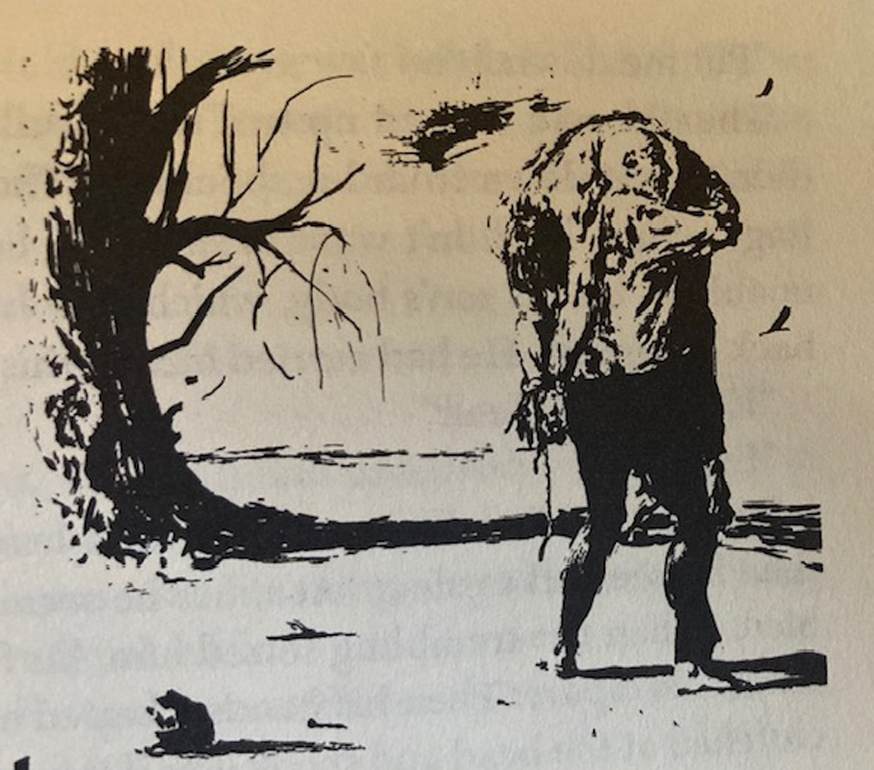
Illustration by Kermit Oliver
*
In such a harsh, bleak world, life becomes an unrelenting struggle. Poverty, hunger, hopelessness, and violence are the daily bread of Rulfo's cast of characters. As each year brings more of the same, resignation and despair dominate the psyche. People no longer have the "will to continue to bear the calamities of the weather year after year." The drudgery of life becomes "an eternal pilgrimage." The footprint a man leaves in the sand is formless, "as if it had been made by an animal's hoof."
What the narrator in "Talpa" says about a particularly sad and burdensome task he must perform—"I'm beginning to feel as if we hadn't gotten anywhere, that we're here for a short while, to rest, and that later we'll start walking again"—might well serve as a metaphor for the life journey that every one of Rulfo's characters must make. Endurance—"It's God's mandate" —is often the best they can muster.
As in his novel Pedro Páramo, an eerie silence permeates the story collection. "In my life there are many silences," Rulfo once said. "In my writing, too…. The practice of writing the short stories disciplined me and made me see the need to disappear and leave my characters the freedom to talk at will."
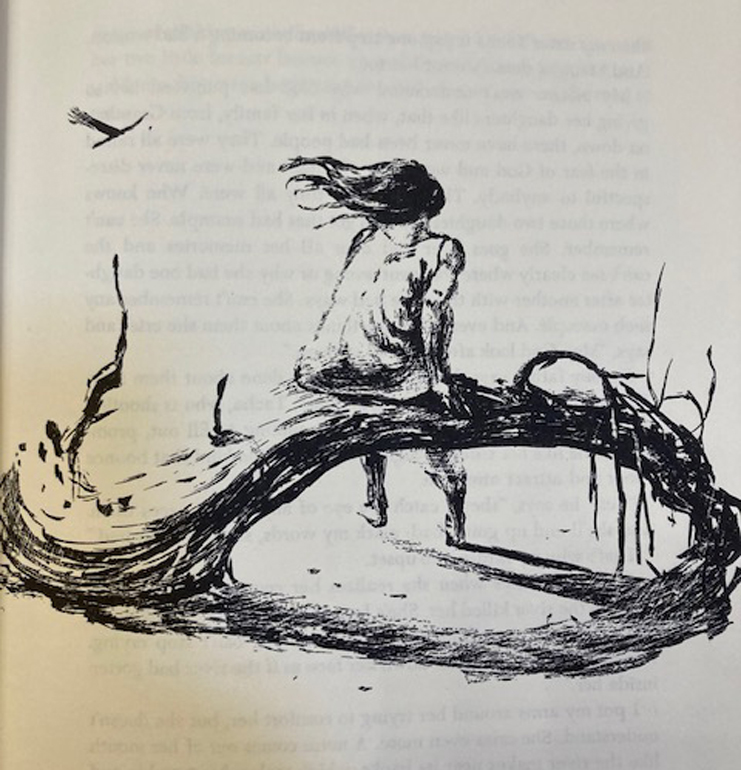
Illustration by Kermit Oliver
*
The deepest silence is perhaps the silence of God, which permeates these characters' lives. In one story, the narrator, after many hard days on the road with his dying brother, hopes to be "the first to get to the Virgen, before she ran out of miracles." The indifference of the Universe is palpable in Rulfo's stories.
The title story, the longest one in the collection, presents an up-close-and-dirty picture of a ragtag band of guerrilla fighters during the Mexican Revolution. They engage in skirmishes, ambushes, village burnings, train derailments. But when the Federales start using machine guns, and a body is left like a sieve, the troop decides it's time to run away and hide.
"We passed the time staring at the Plain," the narrator says, "at those lands down below where we had been born and lived and where now they were waiting to kill us…. This is how the land started to vanish for us. We almost didn't even have enough ground to be buried in."
In the end, the narrator, who has spent three years in prison for his crimes, discovers that he has a son. "But he's no bandit or killer," his wife tells him. "He's a good person." In response, he bows his head, an ambiguous gesture—of reverence, repentance, humility, resignation? Perhaps all of that.
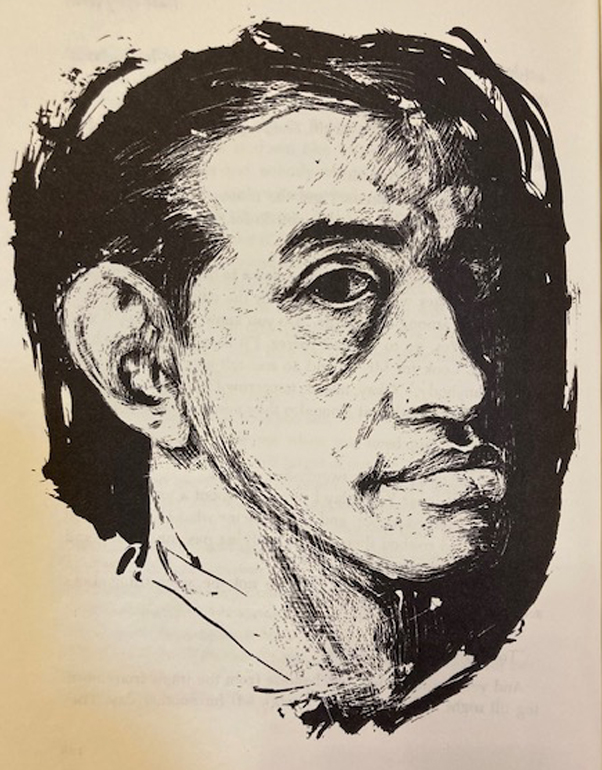
Illustration by Kermit Oliver
*
Plain, abject survival—from the misery of poverty, from the viciousness of the revolution, from the unforgiveness of the land, from the unrelenting desire for vengeance—this becomes Rulfo's overall theme. If he offers any glimmer of hope, it is his portrayal of the quiet dignity and fierce will to live that imbue the wretched lives of his characters.
Though these stories take place during the Revolution and the Cristero Wars, some have an uncomfortably contemporary resonance. "Paso del Norte," for instance, is about a son's attempt to cross the Rio Grande. "And what the hell'll you do in El Norte?," asks his father. To make money, the son answers. But later, when he returns, he has nothing but a tragic tale to tell: "We were crossing the river when they shot us with Mausers."
In one of the finest stories in the collection, "You Don't Hear Dogs Barking," a father carries his injured son, Ignacio, on his back. The son, a robber and killer, has brought the father nothing but difficulty, humiliation, and shame: "Everything I'm doing, I'm not doing for you," the father tells him. "I'm doing it for your late mother. Because you were her son." Here again, we see Rulfo's brilliant use of language. In a few words he captures the stoic integrity of the father. Indeed, try to find a superfluous word in any of Rulfo's sentences. As Susan Sontag once noted, he brings to his stories a"bewitching concision and directness."

Illustration by Kermit Oliver
*
Rulfo's work brought a distinctly Latin American voice to the attention of the world. He helped, says Stavans, the next generation of Mexican writers find the "DNA of our mexicanidad." The stories in El Llano en llamas are a superb place to start a serious exploration of modern Mexican literature.
_
**************

Philip Gambone, a retired high school English teacher, also taught creative and expository writing at Harvard for twenty-eight years. He is the author of five books, most recently As Far As I Can Tell: Finding My Father in World War II, which was named one of the Best Books of 2020 by the Boston Globe. It is available through Amazon, at the Biblioteca bookshop, and at Aurora Books off the Calzada de la Aurora.
**************
*****
Please contribute to Lokkal,
SMA's online collective:
 ***
***
Discover Lokkal:
Watch the two-minute video below.
Then, just below that, scroll down SMA's Community Wall.
Mission

Visit SMA's Social Network
Contact / Contactar

